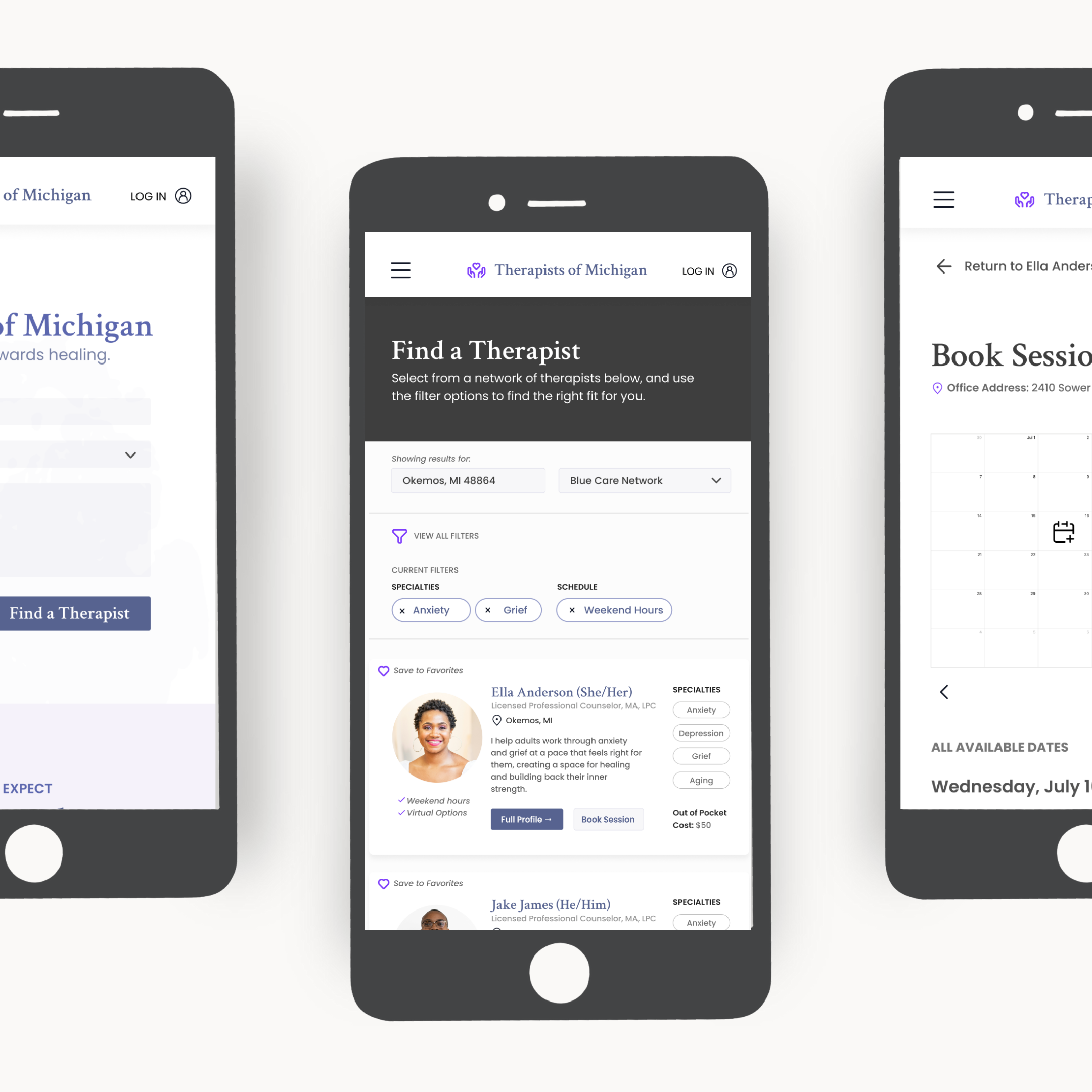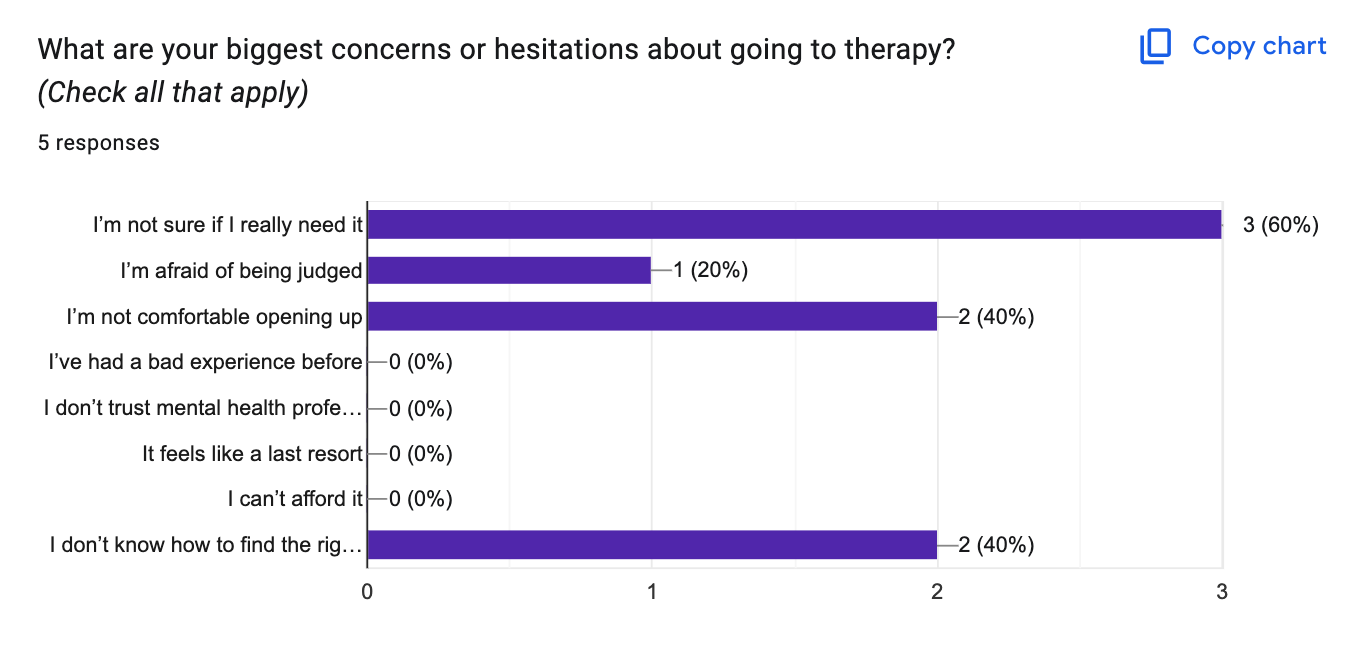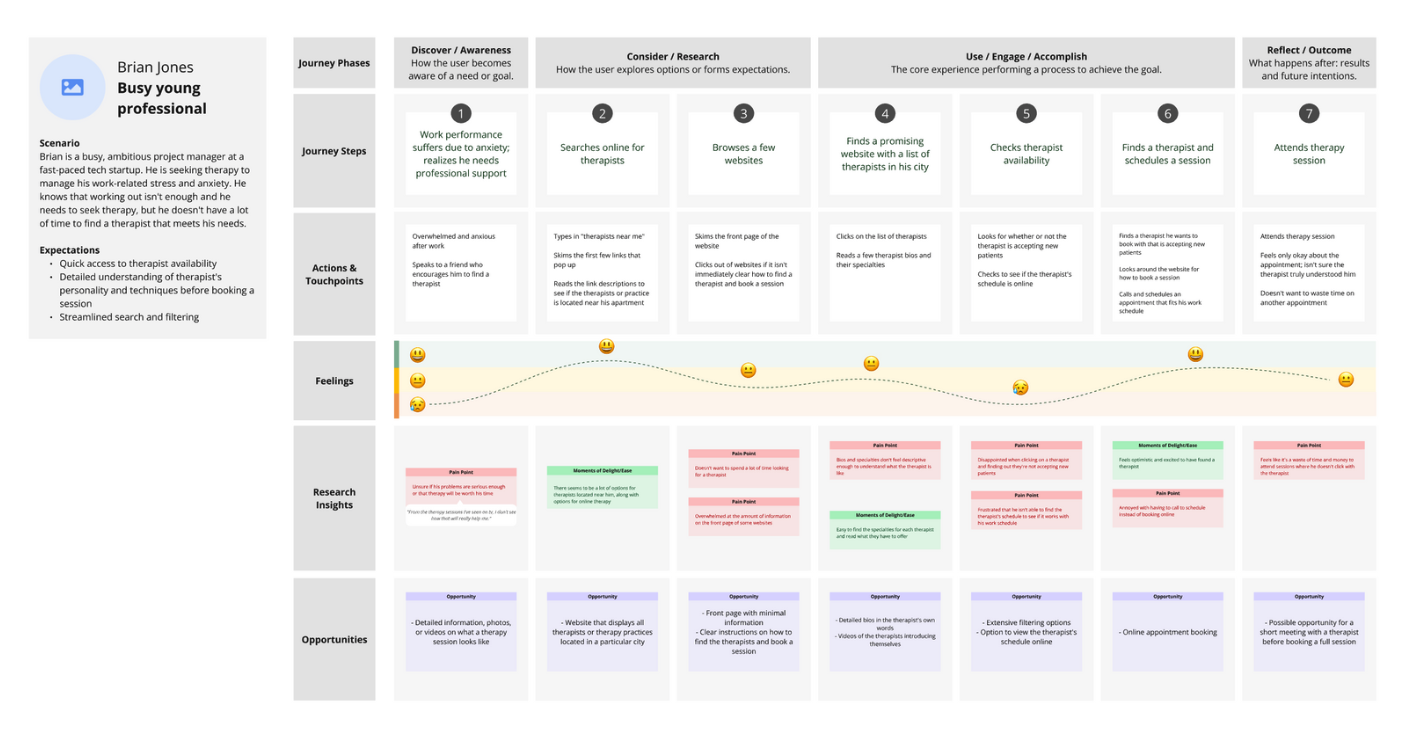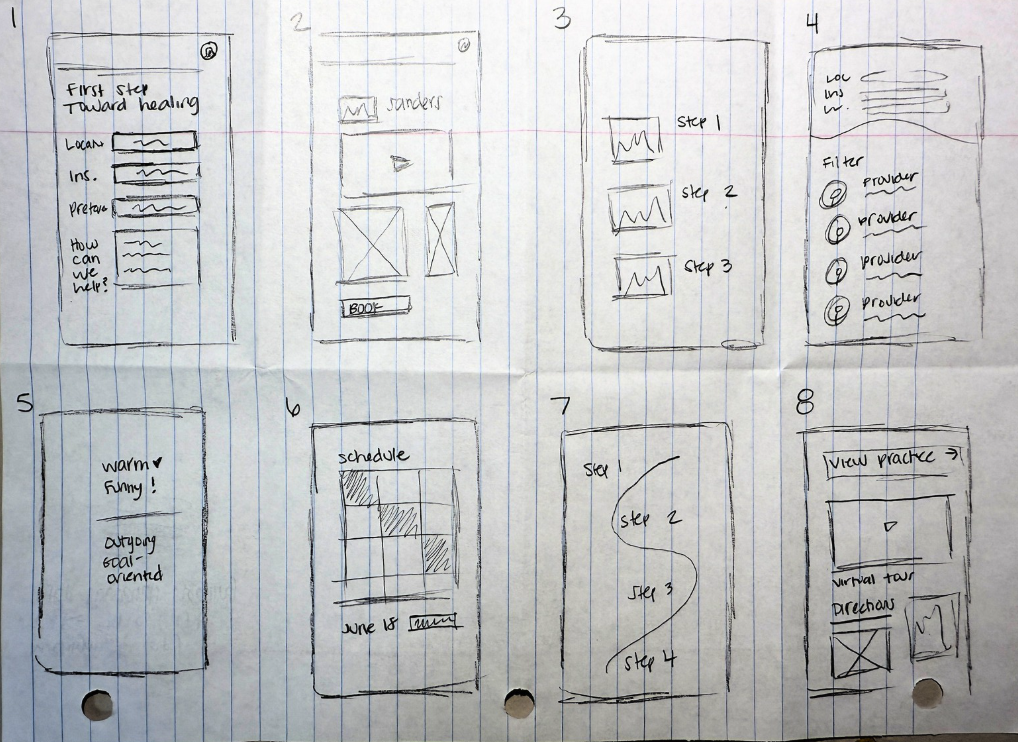
Existing therapy websites often leave people feeling overwhelmed or unsure where to start. With limited information and little clarity on what to expect, many worry about wasting time and money on a therapist who isn’t the right fit.
I designed an online therapist directory featuring advanced search & filtering, personalized therapist videos, easy online booking, and therapist reviews. The design allows users to compare options and feel more confident going in to their first appointment.

make the process of exploring therapy feel quicker, easier, and less intimidating for adults who need support?
Secondary research showed that users want therapists with similar backgrounds or experiences as them. There should be an easier way for clients to be able to find a therapist that they can relate to.
I conducted an unmoderated survey with five participants to explore their thoughts and experiences with therapy and therapy websites.
The majority of participants would feel more comfortable seeking therapy if they knew what to expect.

I conducted 30–45 minute interviews with four participants. I focused on their prior experiences with therapy, their likes and dislikes with existing therapy websites, and barriers to seeking care.
Several participants mentioned that if it’s too difficult or time consuming to find a therapist and figure out their schedule then they won’t follow through. This highlighted a need for efficiency when booking a session.

I created a journey map based off of the persona Brian Jones. Brian wants to book a therapy session as easily and quickly as possible. He is looking for a therapist with weekend or evening availability. He also wants a good understanding of the therapist’s personality and techniques before booking a session so he doesn’t waste time and money.

For this exercise, I gave myself 20 minutes to write down as many ideas or features I could think of, continually asking myself “how might we make the process of exploring therapy feel easier, less intimidating, and more encouraging for adults who need support?”
Through this exercise, I was able to better visualize an information architecture for the platform.

Task 1: Find a list of therapists in your area

Task 2: Explore therapist profile

Task 3: Book a session

For my initial mid-fidelity prototype, I created a platform with the following features:
Streamlined Search: Users can enter their location, insurance, and concerns to find matching therapists with personalized filtering options.
Therapist Profiles: Each profile includes an intro video, bio, specialties, traits, office photos, reviews, and a “book session” button.
Simple Booking Flow: Users select a time from the therapist’s availability calendar, enter contact info, and receive an on-screen confirmation.

Based on the results from Usability testing, I made edits to the original prototype and created a high fidelity prototype in Figma.
